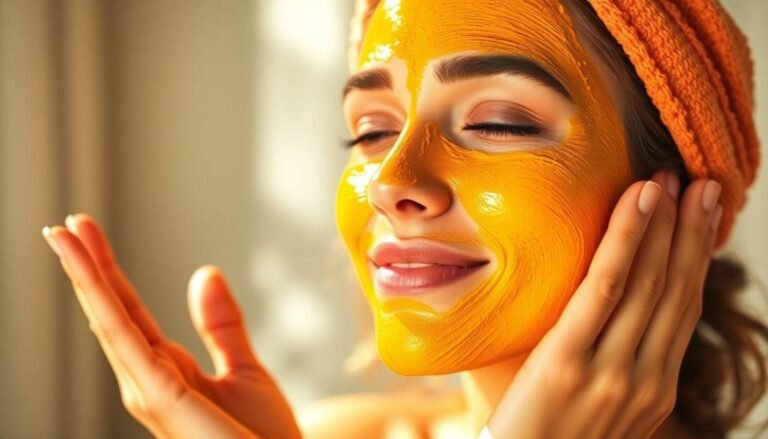From ancient Ayurvedic medicine to modern skincare routines, turmeric has stood the test of time as a powerful natural ingredient. This vibrant yellow spice isn’t just for adding flavor to your favorite curry – it’s packed with compounds that can transform your skin health. The main active component, curcumin, offers impressive anti-inflammatory and antioxidant properties that benefit your skin in numerous ways. If you’ve been searching for a natural addition to your beauty routine, turmeric for skin might just be the golden ticket you’ve been looking for. Let’s explore how this kitchen staple can become your complexion’s best friend.
The Science Behind Turmeric’s Skin Benefits
Before diving into the specific benefits, let’s understand why turmeric works so well for skin health. Turmeric contains curcumin, a powerful bioactive compound with impressive anti-inflammatory, antimicrobial, and antioxidant properties. These properties enable turmeric to fight skin concerns at their source rather than just masking symptoms. When applied topically or consumed internally, turmeric can help address various skin issues by targeting inflammation and oxidative stress – two major culprits behind most skin problems.
1. Reduces Inflammation and Treats Acne
One of the most celebrated benefits of turmeric is its ability to calm inflamed skin. If you’re dealing with acne breakouts or redness, turmeric might be your new best friend.
The anti-inflammatory properties of curcumin help to:
What makes turmeric particularly effective for acne is its dual-action approach. Not only does it reduce inflammation, but it also has natural antibacterial properties that fight acne-causing bacteria. Try making a simple mask with turmeric powder and honey for a soothing treatment that targets breakouts without harsh chemicals.
2. Brightens Skin and Fades Dark Spots
Looking for that natural glow? Turmeric has been used for centuries in traditional beauty routines to brighten the complexion and even out skin tone. It works by inhibiting the production of excess melanin – the pigment responsible for dark spots and uneven skin tone.
How Turmeric Tackles Hyperpigmentation
When applied consistently, turmeric can help fade:
Many women notice a more radiant complexion after incorporating turmeric into their skincare routine for just a few weeks. The natural brightening effect doesn’t strip the skin like harsh chemical alternatives might, making it suitable for most skin types.
3. Provides Powerful Antioxidant Protection
Your skin faces daily attacks from environmental pollutants, UV radiation, and other sources of free radicals. These unstable molecules damage skin cells and accelerate aging, leading to wrinkles, fine lines, and dull skin.
Turmeric’s antioxidant properties help neutralize these free radicals before they can cause harm. Think of it as a shield for your skin, protecting it from the invisible enemies that age us prematurely. Regular use of turmeric-based products can help:
4. Promotes Wound Healing
Got a minor cut, scrape, or persistent acne scar? Turmeric might help speed up healing. Research shows that curcumin can enhance tissue formation and collagen synthesis – two critical components of the wound healing process.
When applied to minor skin injuries or irritations, turmeric can:
This natural healing promotion makes turmeric especially valuable for those dealing with acne scars or other minor skin concerns that need extra healing support.
5. Natural Exfoliation for Smoother Skin
Beyond its biochemical benefits, turmeric also offers physical benefits as a gentle exfoliant. The fine powder form of turmeric can help remove dead skin cells when used in scrubs or masks, revealing fresher, smoother skin underneath.
Simple Turmeric Exfoliating Mask Recipe
Try this simple recipe for glowing skin:
Mix all ingredients together, apply to clean skin, and gently massage in circular motions. Leave on for 15-20 minutes before rinsing with warm water. The yogurt contains lactic acid for chemical exfoliation while the turmeric provides gentle physical exfoliation – a perfect combination for smoother, brighter skin.
How to Incorporate Turmeric Into Your Skincare Routine
Ready to harness the power of turmeric for your skin? Here are some practical ways to add it to your beauty routine:
One important note: pure turmeric can temporarily stain the skin yellow, especially for those with fair complexions. If you’re concerned about this, look for products with turmeric extract rather than the raw powder, or do a patch test first. The staining usually fades quickly and is a small price to pay for the amazing benefits!
Whether you choose to apply it topically or include it in your diet, turmeric for skin health offers impressive results that have stood the test of time. From fighting acne to preventing premature aging, this golden spice deserves a spot in your beauty arsenal. Try incorporating it into your routine consistently for a few weeks, and you’ll likely notice improvements in your skin’s appearance and health. After all, sometimes the most effective skincare solutions are found not in expensive products, but in nature’s own medicine cabinet.







